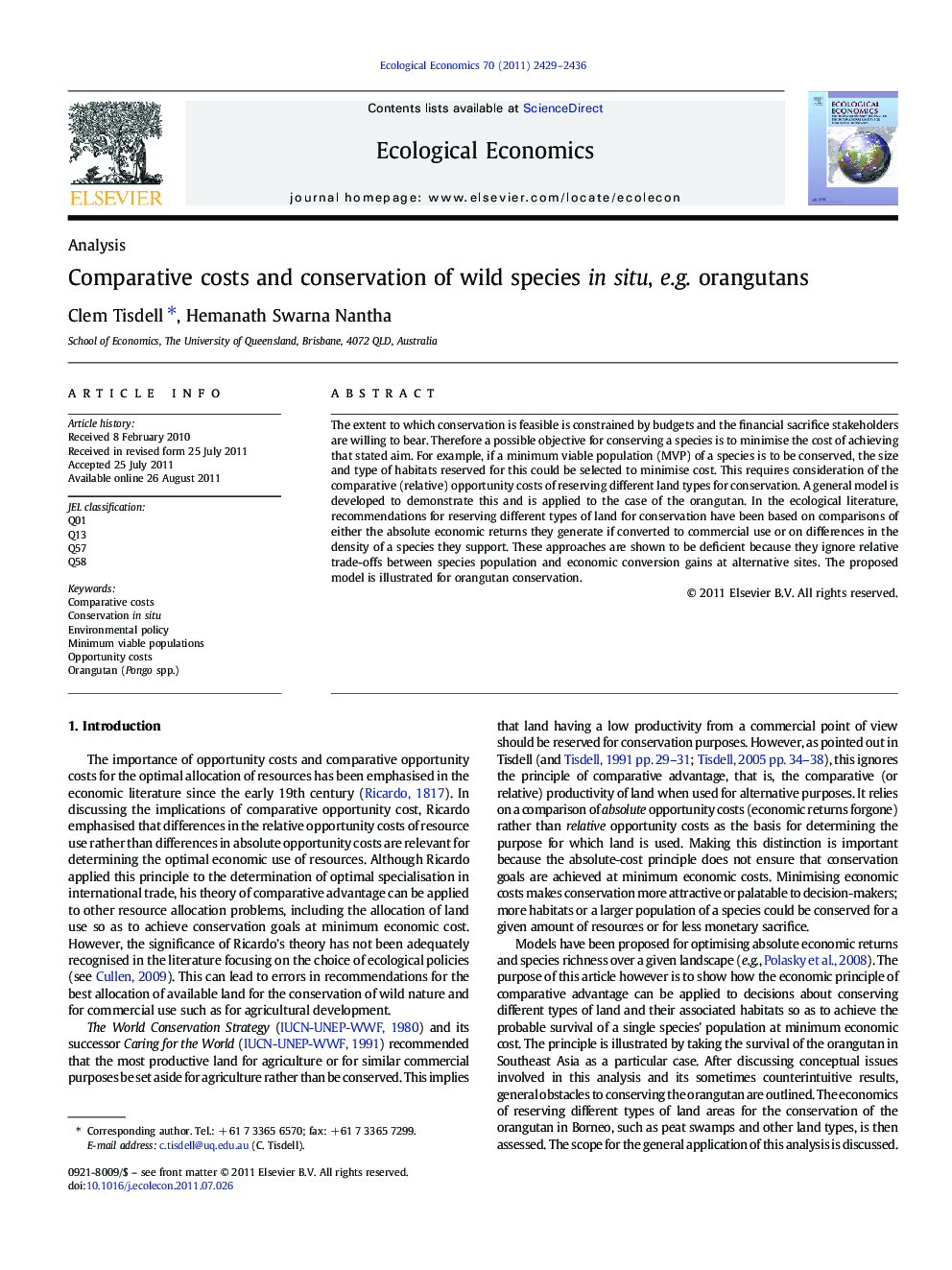| Article ID | Journal | Published Year | Pages | File Type |
|---|---|---|---|---|
| 5050508 | Ecological Economics | 2011 | 8 Pages |
The extent to which conservation is feasible is constrained by budgets and the financial sacrifice stakeholders are willing to bear. Therefore a possible objective for conserving a species is to minimise the cost of achieving that stated aim. For example, if a minimum viable population (MVP) of a species is to be conserved, the size and type of habitats reserved for this could be selected to minimise cost. This requires consideration of the comparative (relative) opportunity costs of reserving different land types for conservation. A general model is developed to demonstrate this and is applied to the case of the orangutan. In the ecological literature, recommendations for reserving different types of land for conservation have been based on comparisons of either the absolute economic returns they generate if converted to commercial use or on differences in the density of a species they support. These approaches are shown to be deficient because they ignore relative trade-offs between species population and economic conversion gains at alternative sites. The proposed model is illustrated for orangutan conservation.
⺠Combines economics and ecology to determine best land use for species conservation. ⺠Relative opportunity costs at alternative sites are critical for this optimising. ⺠Absolute values at alternative sites are irrelevant for this optimisation. ⺠The analysis is applied to land-use decisions for orangutan conservation. ⺠The model developed is practical and can be applied with limited data.
